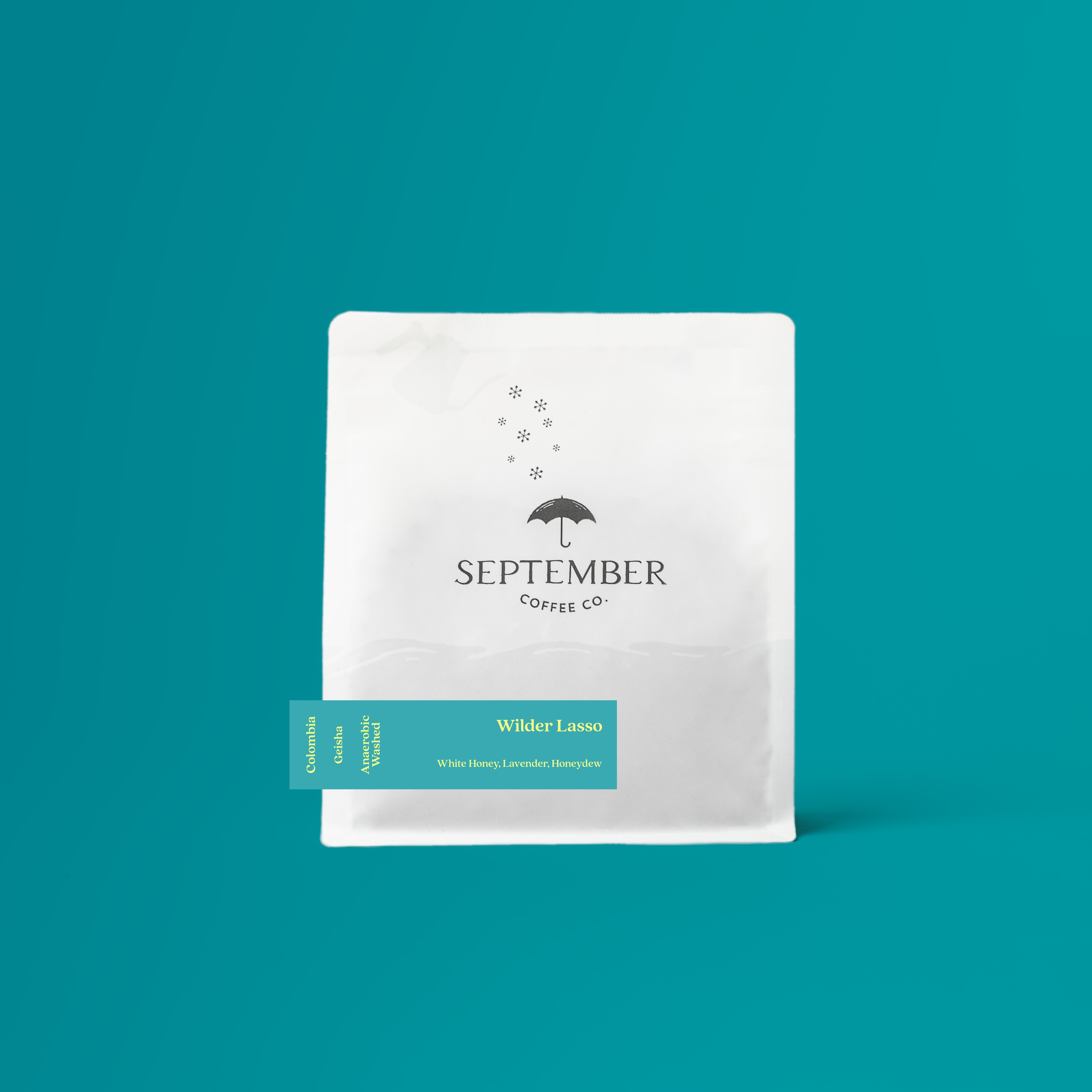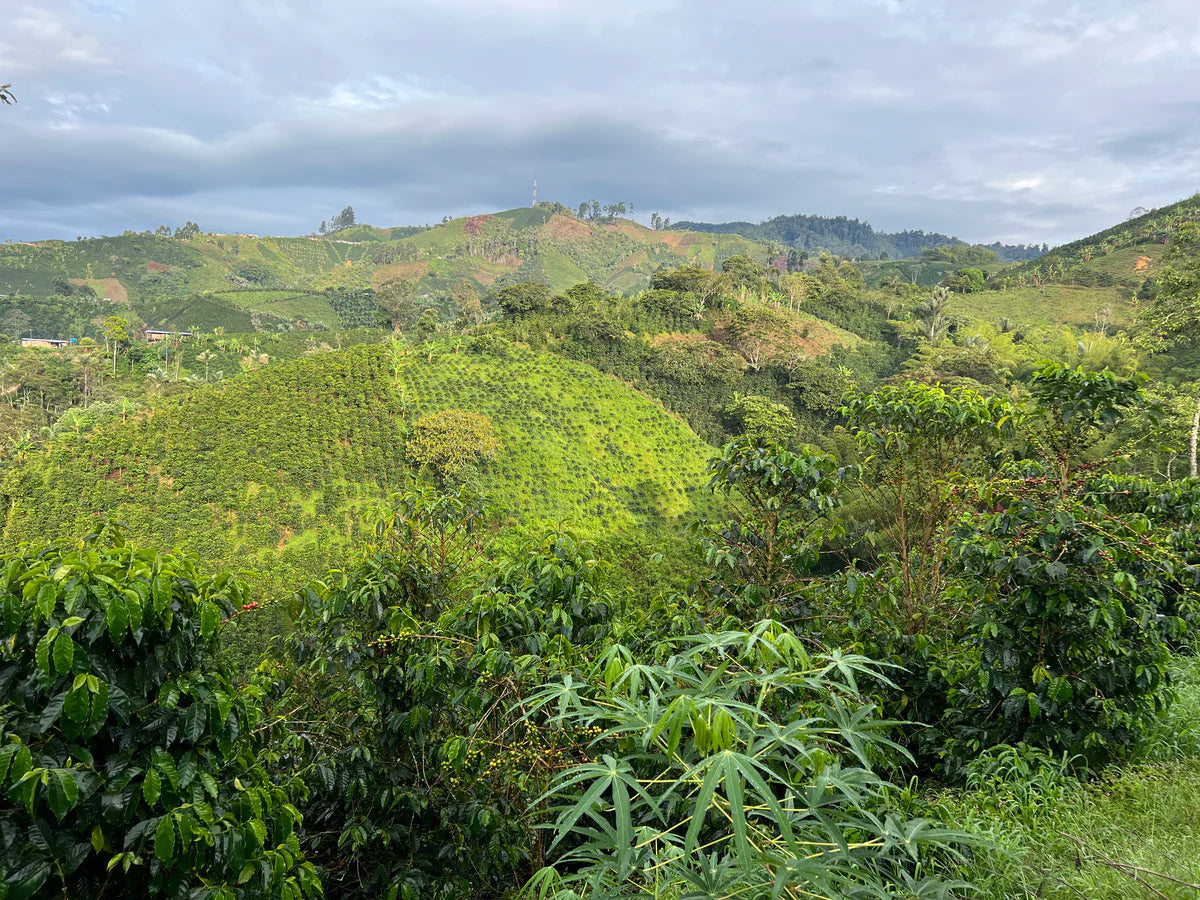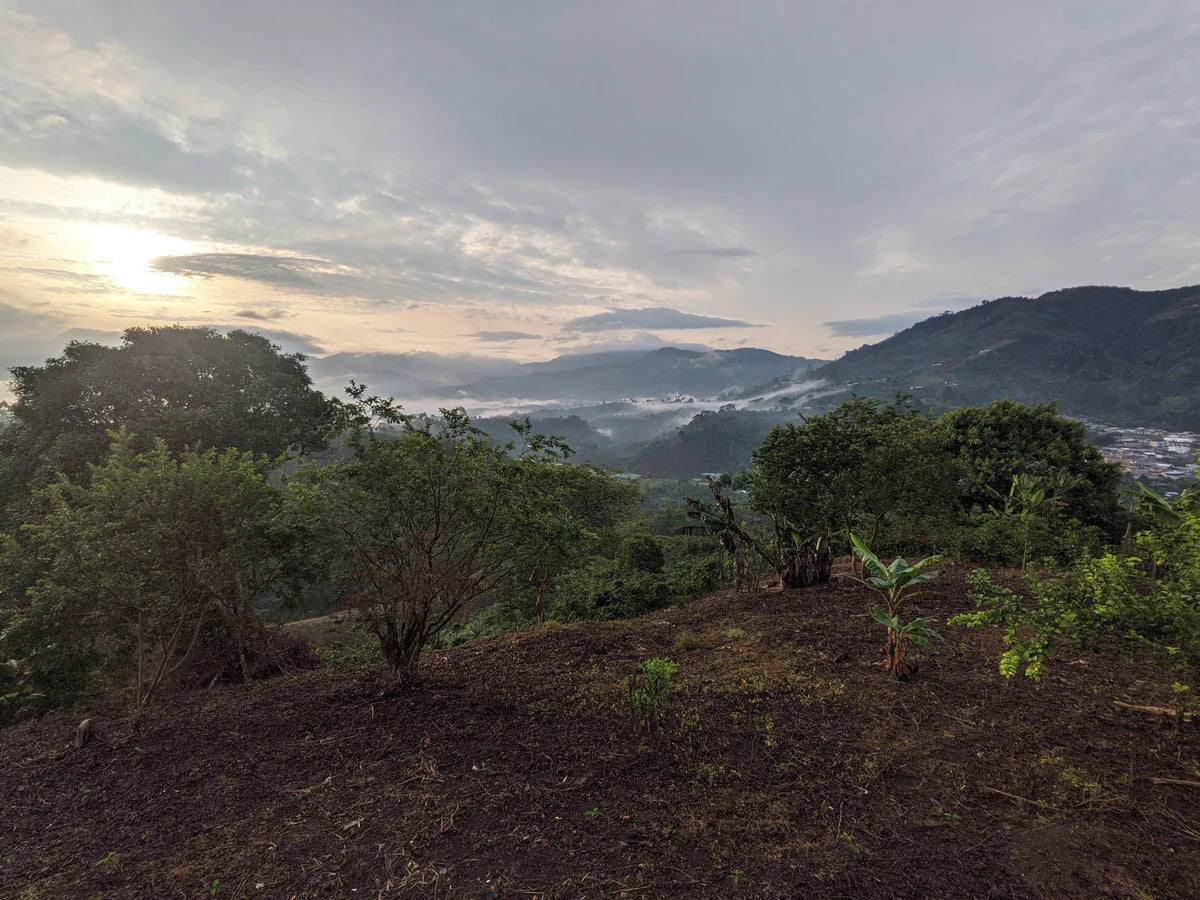


Wilder Lasso - Geisha
Yet another stellar Geisha from our friend, Wilder Lasso (Lazo). This time we are excited to share his anaerobic washed Geisha. In the cup we get an intensely floral and sweet coffee that reminds us of lavender, white honey, tropicals like melon dew and London fog.
200G
Wilder Lasso - Geisha
September Coffee Roastery
119 Iber Road
Unit 9
Ottawa ON K2S 1E7
Canada
- Variety: Geisha
- Country: Colombia
- Region: San Adolfo. Huila
- Process: Anerobic Washed
- Altitude: 1900 MASL
- Producer: Wilder Lasso
- Farm: La Dinastía
- Roast Level: Light
 In the cup
In the cup
We get beautiful florals like lavender and jasmine and earl grey with a great sweetness that reminds us of melon dew and white honey. This coffee is vibrant, clean, memorable, and floral with a long sweet finish.
 Funky
Funky
 Experimental
Experimental
 About The Producer
About The Producer
Wilder Lasso (or Lazo) is actually a veterinarian specialized in livestock farming. As the coffee price continued to decline in 2016 and his father fell seriously ill, he decided to bring the family farm up to speed together with his brother. Initially, their coffees scored between 80-83 points on the cupping scale, despite elaborate processes and preparations. Wilder started examining soil samples and using targeted nutrients and fertilizers to neutralize the pH value, thereby increasing the availability of nutrients for the coffee trees. He refers to this as precision agriculture.
 Processing
Processing
To ensure optimal results, the coffee trees are first provided with nutrient-rich soil. Fully ripe and exceptionally large cherries are harvested and washed in water tanks to remove impurities and floating beans. After pulping the cherries, Wilder places them in blue fermentation tanks. The tanks are then filled with water and sealed, allowing the coffee to ferment for 120 hours. Once fermentation is complete, the coffee is fully washed and dried in marquesinas over 12 days. Wilder’s approach to anaerobic fermentation highlights what he calls the “true coffee character.” In anaerobic conditions, microorganisms work much slower compared to aerobic processes. While much of what occurs between picking and drying is often misclassified as fermentation (when it is technically oxidation), Wilder adheres to a precise anaerobic methodology.
 Variety
Variety
This variety was originally collected from coffee forests in Ethiopia in the 1930s. From there, it was sent to the Lyamungu research station in Tanzania, and then brought to Centro Agronómico Tropical de Investigación y Enseñanza (CATIE) in Central America in the 1953, where it was logged as accession T2722. It was distributed throughout Panama via CATIE in the 1960s after it had been recognized for tolerance to coffee leaf rust. However, the plant's branches were brittle and not favored by farmers so it was not widely planted. The coffee came to prominence in 2005 when the Peterson family of Boquete, Panama, entered it into the "Best of Panama" competition and auction. It received exceptionally high marks and broke the then-record for green coffee auction prices, selling for over $20/pound.There is significant confusion about Geisha because there are multiple genetically distinct plant types that have been referred to as Geisha, many of which share similar geographic origins in Ethiopia. Recent genetic diversity analyses conducted by World Coffee Research confirm that Panamanian Geisha descendent from T2722 is distinct and uniform. It is associated with extremely high cup quality when the plants are managed well at high altitude, and is known for its delicate floral, jasmine, and peach-like aromas.
